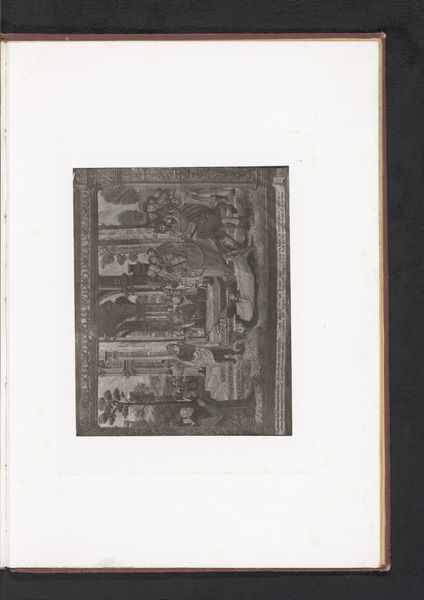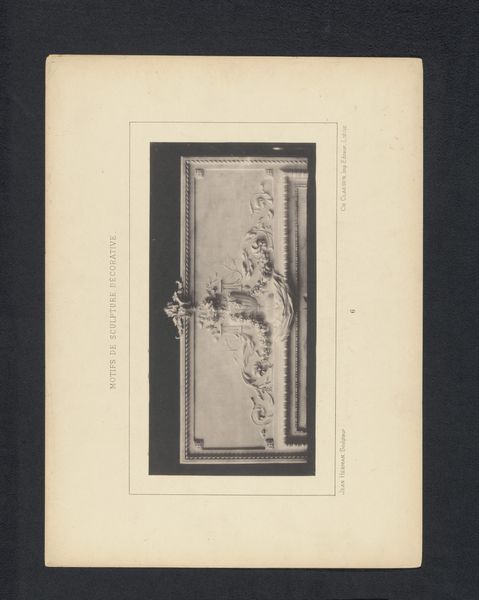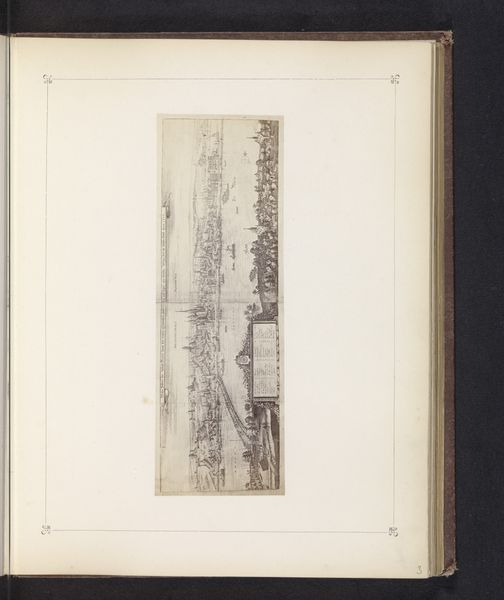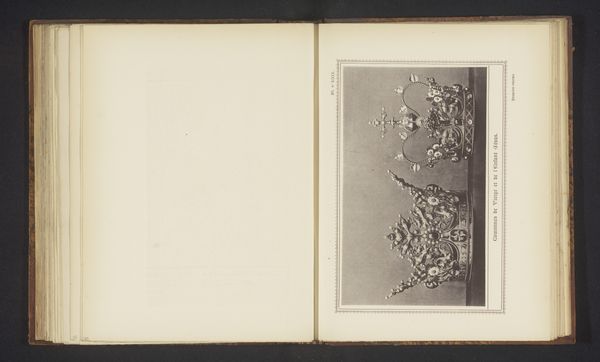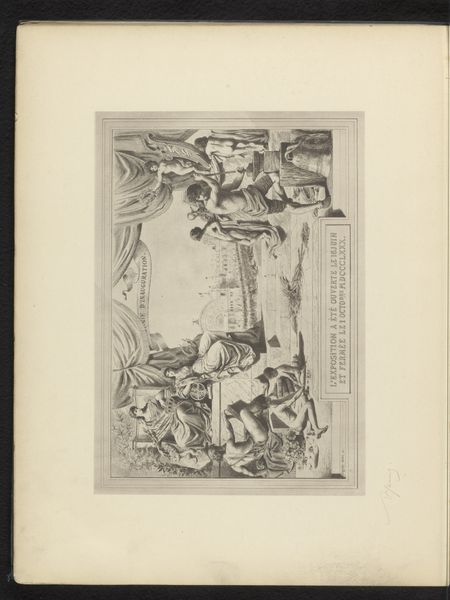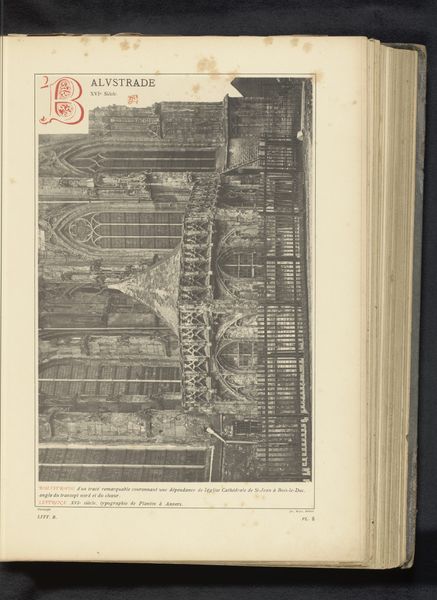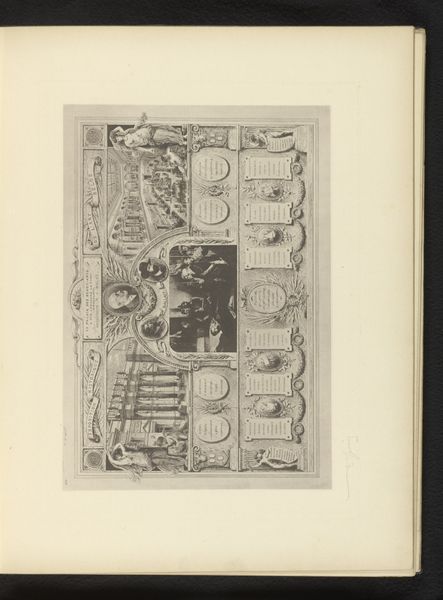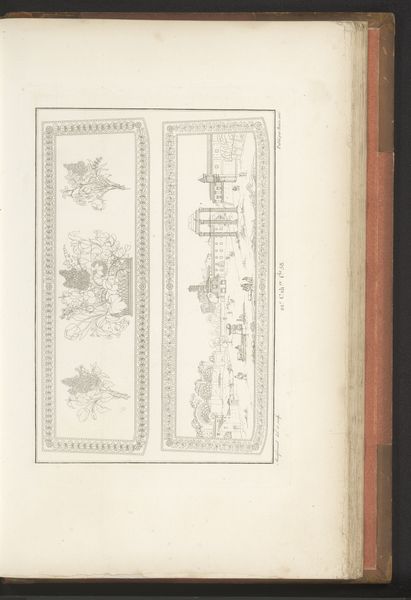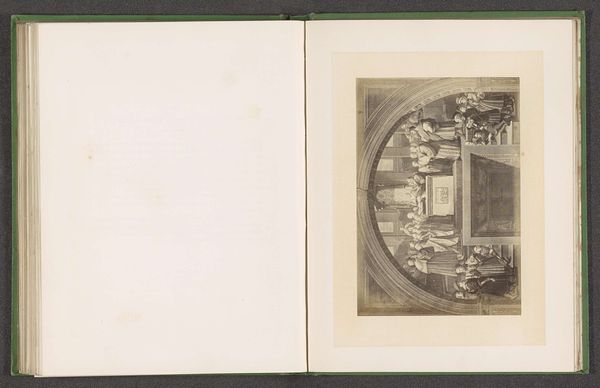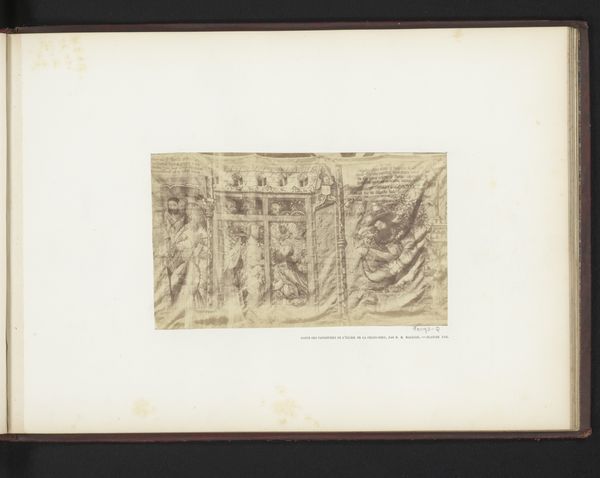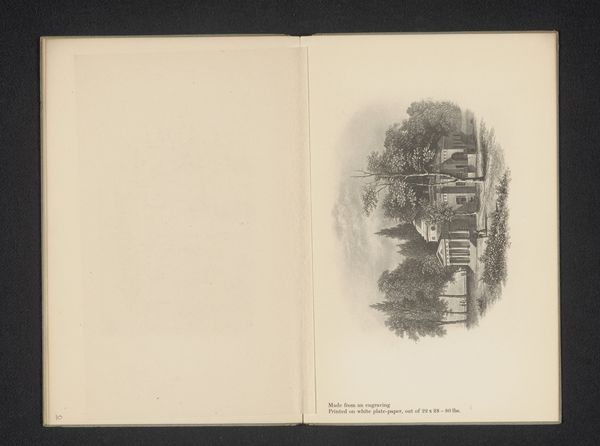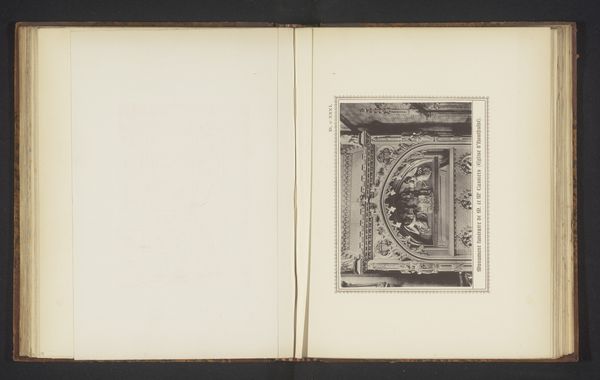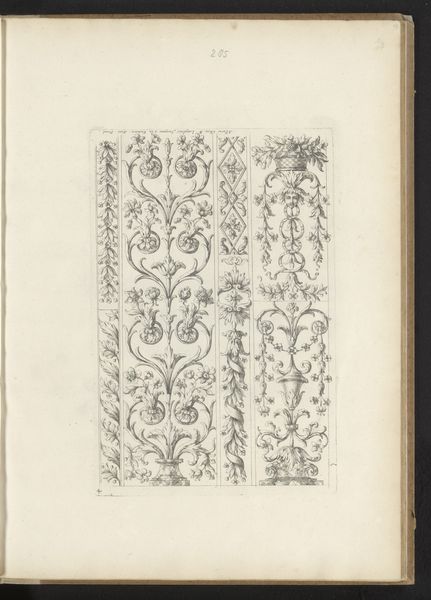
Reproductie van een gravure van een botanische tuin op de Exposition Nationale van 1880 in Brussel, door Armand Heins 1881 - 1882
0:00
0:00
graphic-art, print, engraving
#
graphic-art
# print
#
landscape
#
academic-art
#
engraving
Dimensions: height 207 mm, width 298 mm
Copyright: Rijks Museum: Open Domain
Editor: This engraving by Armand Heins, created between 1881 and 1882, depicts a botanical garden at the National Exposition of 1880 in Brussels. I'm immediately drawn to the intricate detail and almost dreamlike quality of the scene. What compositional elements stand out to you? Curator: The composition demonstrates a sophisticated understanding of spatial relationships. Notice how the artist has divided the picture plane into distinct zones, juxtaposing densely textured areas with relatively open spaces. The lettering within the image and its various panels contribute to an overall structure, and this visual rhythm, alongside the contrast of light and shadow, animates the static subject matter. It invites further inspection. How does this engraving achieve a sense of depth and volume despite being a two-dimensional print? Editor: It's interesting you point out the texture. Looking closer, I see that Heins uses incredibly fine lines and hatching techniques to create an illusion of depth, making certain foliage pop in comparison to architectural elements. It is quite immersive for an engraving. What’s the effect of superimposing these detailed drawings onto what seems to be text? Curator: The integration of text with pictorial elements creates a self-referential commentary on the act of representation. The garden and exhibition are depicted through this reproductive print and placed with snippets of language – they mirror one another. Do you notice how that symmetry adds a layer of conceptual complexity? Editor: Yes, I think it brings a fascinating sense of dynamism. So much is being revealed through the material and its form. Curator: Indeed. It is precisely within these formal and material considerations that we begin to apprehend the work's aesthetic value and conceptual framework. Editor: Thank you. That formalist lens has definitely enriched my understanding!
Comments
No comments
Be the first to comment and join the conversation on the ultimate creative platform.
